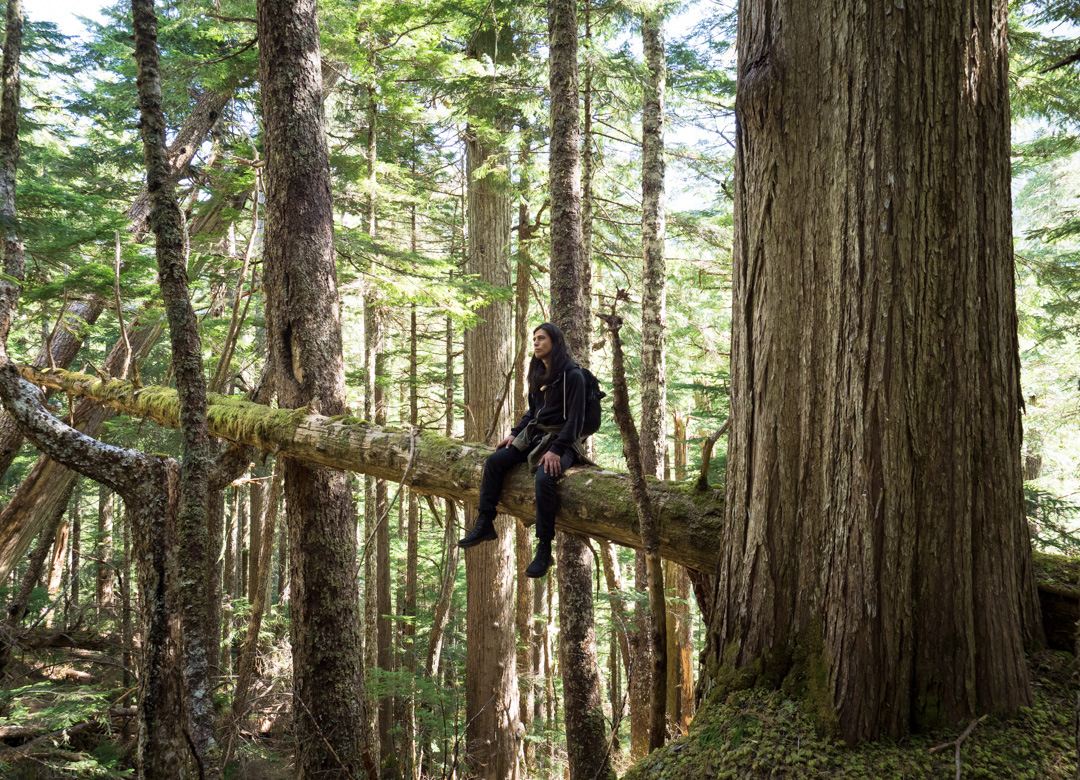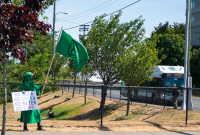Support strong Canadian climate journalism for 2025
This is the final piece in a three-part series on B.C.'s old-growth forest management plan. You can read the first and second pieces here and here.
On Sept. 11, the B.C. government unveiled its new approach to old-growth forest management and released the findings of an independent panel report detailing its previous efforts. Here are the main takeaways on what the new plan gets right and what still needs to be done to protect the province's old-growth forests. This final segment discusses the last three of 10 steps needed to improve overall forest management and protect our big trees.
The Special Tree Protection Regulation is weak, but precedent-setting. It must be improved.
The B.C. government announcement includes a Special Tree Protection Regulation. Although the number of trees set aside is small and largely ignored by the media and commentators, this regulation is precedent-setting. It lists 11 tree species that are now automatically protected (including a one-hectare buffer) if they are a certain size, whether they are on public or private land. Anyone who violates this regulation by cutting these large trees will be fined. The province estimates that the regulation will result in up to 1,500 trees being spared.
However, a huge number of the last big, old trees across the province will not be saved by this regulation — even though they are massive — because their diameter doesn’t meet the regulation's bar. In other words, the minimum diameter set by the government is too high.

There is overwhelming public support for protection of the last big, old trees. The Special Tree Protection Regulation can be an important part of the solution for the last old-growth forests, but it must be amended to capture many more of the last big, old trees, as well as more tree species.
The independent panel calls for changing forest management overall, not just for old-growth trees.
What came through loud and clear in the independent panel’s recommendations is the need to transform forest stewardship overall — not just as it relates to old-growth — and support communities through the necessary shift away from logging old-growth trees.
The panel recommends that we declare the conservation and management of ecosystem health and biodiversity of B.C.'s forests an overarching priority and replace the timber focus of current provincial laws.
The B.C. government was preparing to change the forestry laws in that direction earlier this year, however, those plans were delayed because of the pandemic, despite their urgency.
The panel also recommended programs to develop alternatives to clear-cutting in order to maintain old forest values. This would be a crucial step to end a form of management that results too often in a complete loss of old-growth across vast landscapes and transforms them into uniform, young forests.
The panel recognized significant economic restructuring will be required to support forest sector workers and communities as we shift to a new forest management system.

The door has cracked open a little bit. What happens next is unknown. It will depend on us.
The independent old-growth panel heard from people from all sectors and all parts of the province. Its report provides a path for a paradigm shift, safeguarding the web of life, respecting Indigenous governance and supporting a transition for the forestry sector. It is a plan that can be implemented by the next B.C. government and Indigenous governments within three years, before we face even more dangerous climate and extinction risks.
A few days after the provincial announcement, the Ministry of Forests confirmed that the proposed cutblock with the stunning 1,500-year-old yellow cedar I visited in August has been deferred for at least a year. Having visited this magical forest and its ancient trees, this hopeful news was more emotional for me than much of the information conveyed by the numbers in this series.
Every single tree of similar age in this part of the world has lived through more seasons and stories than any human being ever will. Every tree left standing can touch countless human and non-human beings, of present and future generations, in myriad, unmeasurable ways. The decisions communities and governments will need to make about the last groves with huge, old trees must weigh the short- and long-term benefits of logging them or leaving them standing. What will these decisions tell us about our ability to respond to the danger of global tipping points for ecosystems and the climate?
My colleague kQwa’st’not~Charlene George, cultural guide and member of the t’Sou-ke peoples, shared with us the story of Eagle (QELEṈSEN). It teaches us that we must fly on a mindful path towards a transformational, inclusive future. Can we learn from Indigenous knowledge that human well-being and ecological integrity cannot be separated, before it’s too late to safeguard our web of relations that depend on old, intact forests?
The first steps taken by the B.C. government before the election — the initial deferral areas and Special Tree Protection Regulation — give a little reason for hope, but are vastly insufficient. We must use this election to ask all major parties and candidates whether they are committed to fully implementing and funding all the panel’s recommendations.
The door to ecosystem protection and a livable future has cracked open just a little, and we will need all the energy, goodwill and perseverance we can muster to work together to open it and walk through before there is nothing left to sustain us on the other side.






Comments
The Forestry Industry exists for only one purpose to kill trees and forests to profit from the "more valuable" timber they provide.
May I propose a modest but radical re-imagining of the Forestry Industry? Instead of killing, I suggest we make it a legal requirement that the Forestry Industry pay a "blood price" for every tree they kill, for every forest ecosystem they destroy. Their sector must clean up the choking trash they leave behind them They must replant sustainable mixtures of trees that do not foster the devastations of insect infestation and that do restore essential biological diversity. They must prevent the loss of soil, wildlife and water retention that intact forests provide. Is that too much to ask? Probably, if one's only goal is monetary profit. Probably if one does not care if life on earth survives....